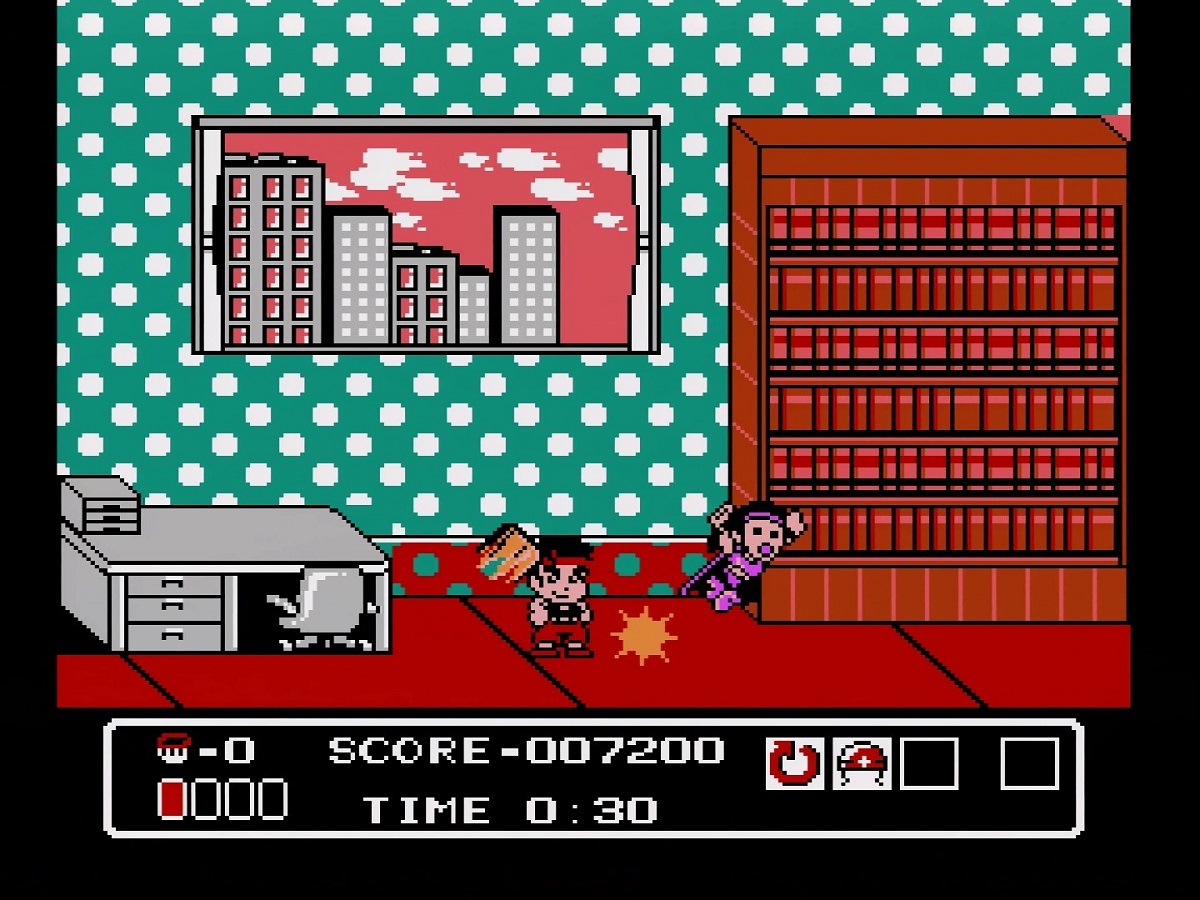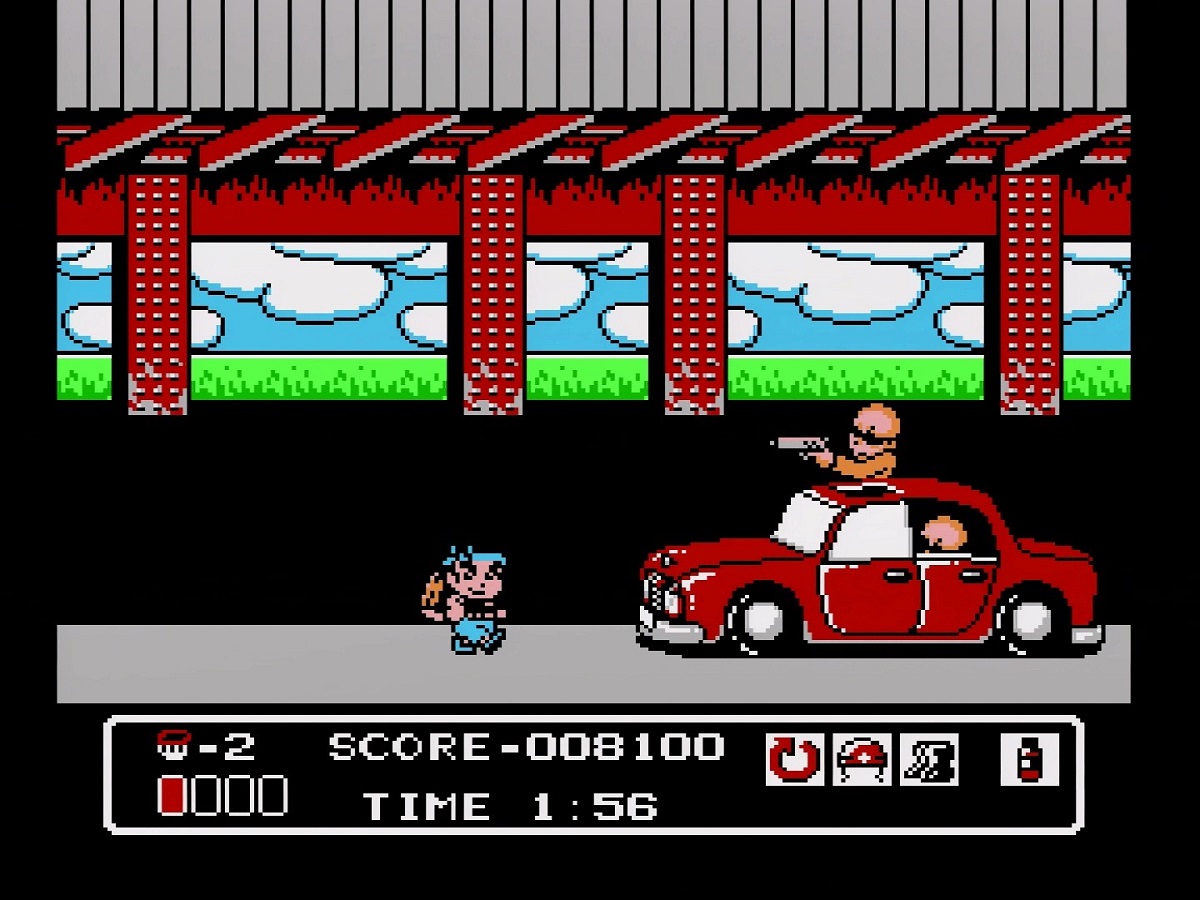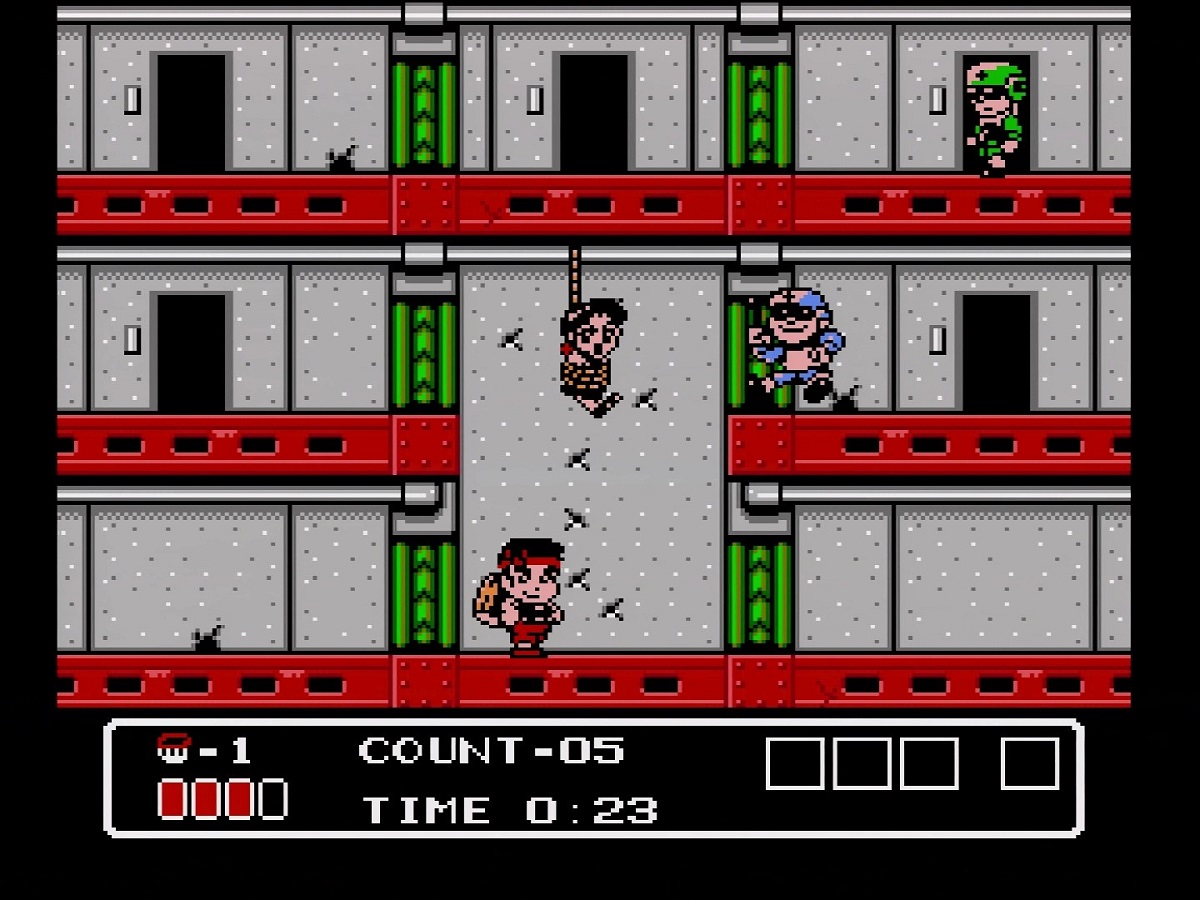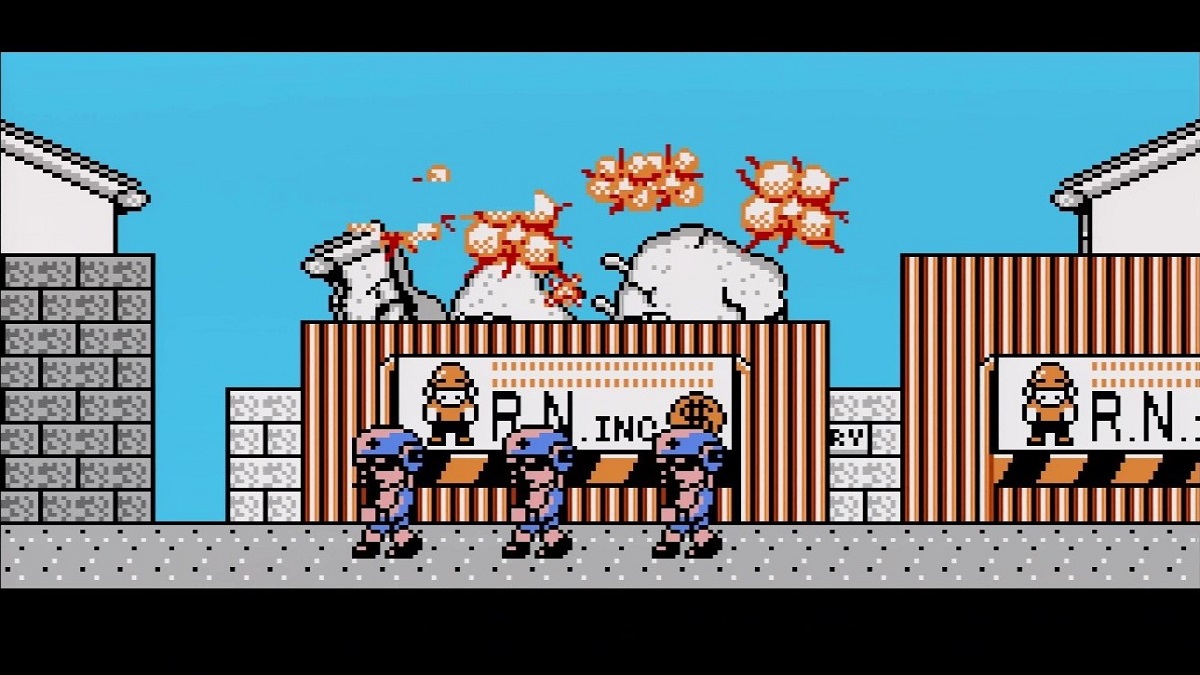I have really been looking forward to Retro-Bit’s NES reissue of 1991’s Hammerin’ Harry. However, in retrospect, this is partially due to me getting it confused with Don Doko Don, a 1989 arcade game in Taito’s single-screen format. If I knew what I was thinking about, I’d be even more excited.
Hammerin’ Harry is a port of Irem’s 1990 arcade game, which was called Daiku no Gen-san: Beranme-chō Sōdōki in Japan. While Irem is perhaps best remembered for their R-Type series, their back catalog is built from an extremely colorful mix of titles on both arcade and consoles. There are a lot of underappreciated greats like Undercover Cops and Gekisha Boy which, to be fair, are largely unknown in the West because they were never localized.
Hammerin’ Harry was, technically, localized, but it was only released in the tumultuous NES PAL region. Because of its late release in a limited market, it tends to resell for an extremely high price. However, Retro-Bit has sent me a copy of their recent retro re-issues to try out. It is both a meaty morsel to sink our teeth into and something simultaneously insubstantial.

The nail that pops up
If you’re unfamiliar with the arcade version, there’s not much to say. It’s a sidescroller where you play as a beefy carpenter dude who wields a big mallet. A rival construction company tears down his house for no reason, and he heads out to file a complaint with their boss.
It’s a pretty routine affair where you travel the six levels while bopping enemies. You can also (sometimes) deflect projectiles back at them, bash the ground to stun enemies, and bop upwards. Then there are boxes and other objects in the environments that you can send flying at enemies, as well as power-ups that give you a bigger mallet or protect you from an additional hit. In the arcade version, you’re dead if you even brush elbows with an enemy.
While I say that the arcade version of Hammerin’ Harry is rather routine, it’s still pretty good. There’s a lot of variety in the levels and bosses, but more importantly, the graphics are very detailed and expressive. It’s also got a lot of pedigree, involving at least two staff members from the Metal Slug series: designer Susumu and sound composer Takushi Hiyamuta (HIYA!). I say “at least” because, like in Metal Slug, everyone in the credits is listed under pseudonyms that aren’t well attributed to actual people, even today. Any one of them might be hidden beneath a different alias.
On the other hand, the difficulty sways like hung laundry in a tropical storm. Harry’s lethal need for personal space doesn’t help, but the level hazards are inconsistent, as are the bosses. It’s not completely unfair, but the first time through can drain you of precious quarters.

Stop! Hammer time!
The 1991 NES version is reasonably faithful. The levels and bosses have been changed a lot to accommodate the more limited hardware to the point where they’re all essentially brand new. There are only five levels instead of the arcade version’s six, but one of them is completely new. Rather than die in a single hit, Harry has a health bar. There are now bonus rounds between levels where you smack as many enemies as possible, kind of like whack-a-mole.
However, it’s the same where it really counts. Harry has all the moves and power-ups he does in the arcade, but more importantly, the graphics are still extremely detailed and expressive. Obviously, the NES can’t match the arcade game, but it’s not a lazy facsimile. The art is overall very impressive, even for a 1991 title.
I’m not sure how you feel about me spoiling a 30-year-old game, but the ending is the best part of the NES version. While the arcade has Harry climbing the evil construction company’s headquarters and bashing the boss until he changes his ways, the console version has that same boss flee the fight. In his place, his receptionist bursts in, transforms into, like, the Ultimate Warrior, and tries to take you down. You then follow the boss to his house, which is the completely new level.

H’MM’RNHRY
Surprisingly, the console version of Hammerin’ Harry preserves the voice clips of the arcade version. Each time you begin a level or continue after a death, Harry shouts, “Let’s get busy!” When he dies, he exclaims, “Ouch!” When you complete a level, someone shrieks, “H’MM’RNHRY!” It’s surprisingly clear, even if it still sounds like a drive-thru speaker.
One place where it should have deviated from the arcade title is in its length. While it makes sense to keep a game short in the arcade, since people are usually standing to play, it leads to really short console games. In all, Hammerin’ Harry took me around 45 minutes to complete, and this was my first time playing it. I died plenty of times, but there is no limit on continues, so there’s nothing to stop you from brute-forcing your way through it.
Hammerin’ Harry is far from the shortest game of the era. Off the top of my head, The Little Mermaid on NES and Kirby’s Dreamland on Game Boy are roughly the same runtime. However, that’s hardly a compliment. It feels insubstantial, especially if you don’t have the Japan-only sequel to move on to.

What’s in the box?
Thankfully, I do have the sequel to segway into. Retro-bit sent me the Concrete Collection which comes with their reissue of Hammerin’ Harry, and their localization of Daiku no Gen-san 2: Akage no Dan no Gyakushō, which has been translated to Hammerin’ Harry 2: Dan the Red Strikes Back.
For Hammerin’ Harry, Retro-Bit got creative with the cartridge. It’s encased in a wood-grained textured plastic. The feel of the cartridge is a bit smoother than an official NES game, but the construction is solid. I took it apart, and there’s a clean-looking PCB solidly fixed in there. These are the first NES games I’ve received from them, and it’s nice to see they get the same treatment as their Genesis titles. They feel like quality in your hands, but there’s no way anyone would mistake them as an original production.
The box it comes in is a lot like the one Battletoads and Double Dragon came in. It’s cardboard, but it’s not the flimsy boxes original NES cartridges came in. It’s a lot more solid and has a magnetic flap that makes it easy to open and close without the risk of creasing. It comes with an instruction manual and an acrylic stand. I prefer to display my games on shelves like a library, but if you prefer the look of a store or place of worship, they’re pretty nice.
Unfortunately, the cover is based on the arcade artwork rather than the incredible European NES cover.
The only thing I wish for with these releases is a non-limited run. Like many boutique game publishers, pre-orders are taken in advance and manufactured based on sales. I absolutely understand how important this is when it comes to producing for demand and minimizing loss, but with the way it is, I can only talk about these games long after pre-orders have ended. The only lesson I can really teach is that Retro-Bit does some mighty fine re-issues.

Tenderized
On the other hand, it gives me an excuse to talk about some obscure titles, which fits neatly with the intentions of this article. I appreciate Retro-Bit’s efforts in giving new attention to rare and unlocalized games through its re-issues.
Hammerin’ Harry was an exceptionally fun one to visit. As I said at the start, it’s been on my radar for quite a while. Beyond just being a short but enjoyable platformer, it’s also an infectiously lively game with terrific art design packed with humorous flourishes. It might not be the console’s best sidescroller, but it’s definitely not boring.
While there was only one Hammerin’ Harry arcade game, the series stretched on across many platformers throughout its lifespan. Only the arcade title reached North America, but the Game Boy game, 1992’s Hammerin’ Harry: Ghost Building Company, did get a release in Europe. That is until the 2008 PSP title, Hammerin’ Harry finally crossed the globe. It makes sense since the games are steeped in the culture of Japan. It’s just a shame that it’s taken until now for us to get an official release over here.
For other retro titles you may have missed, click right here!








